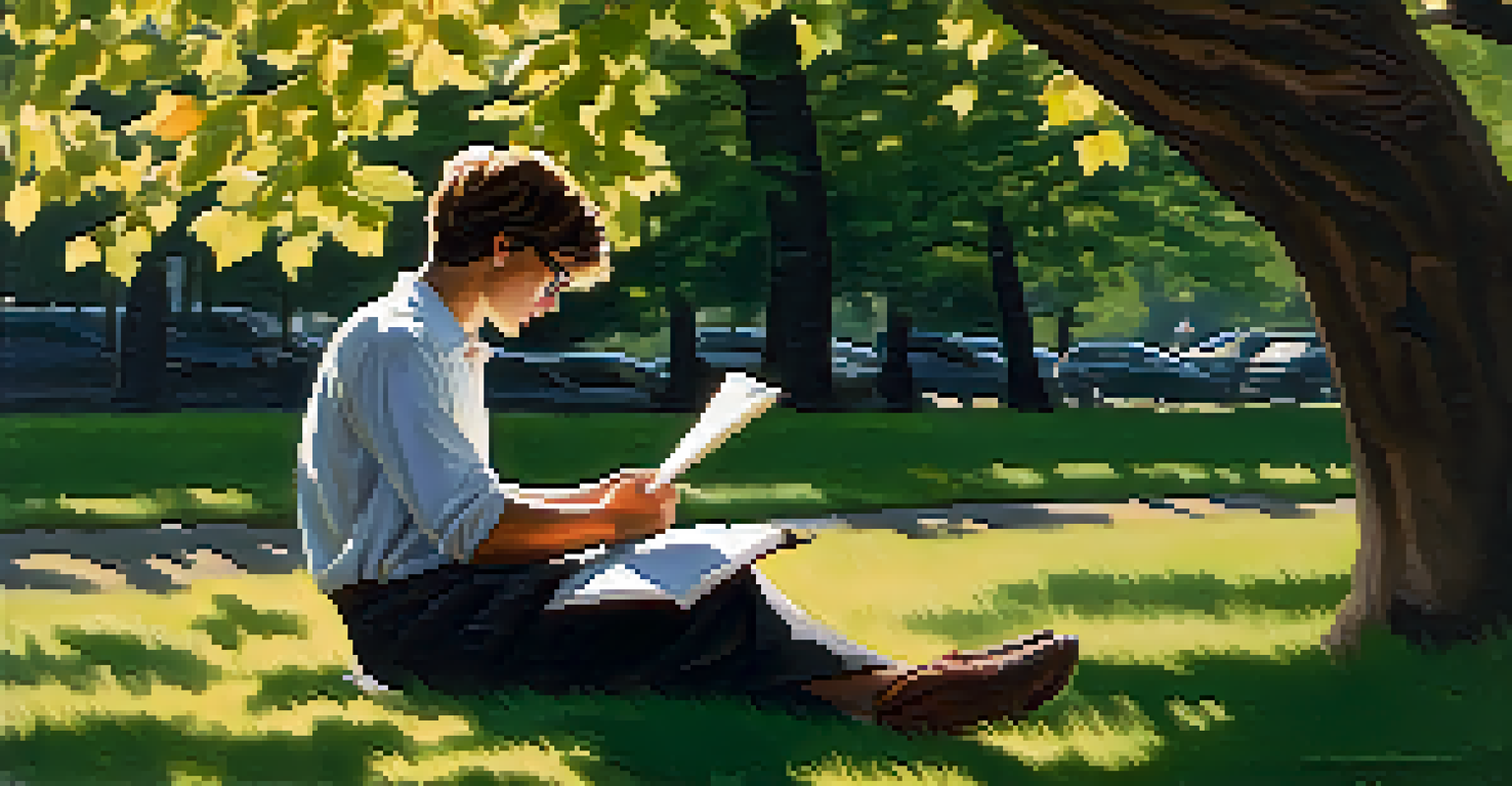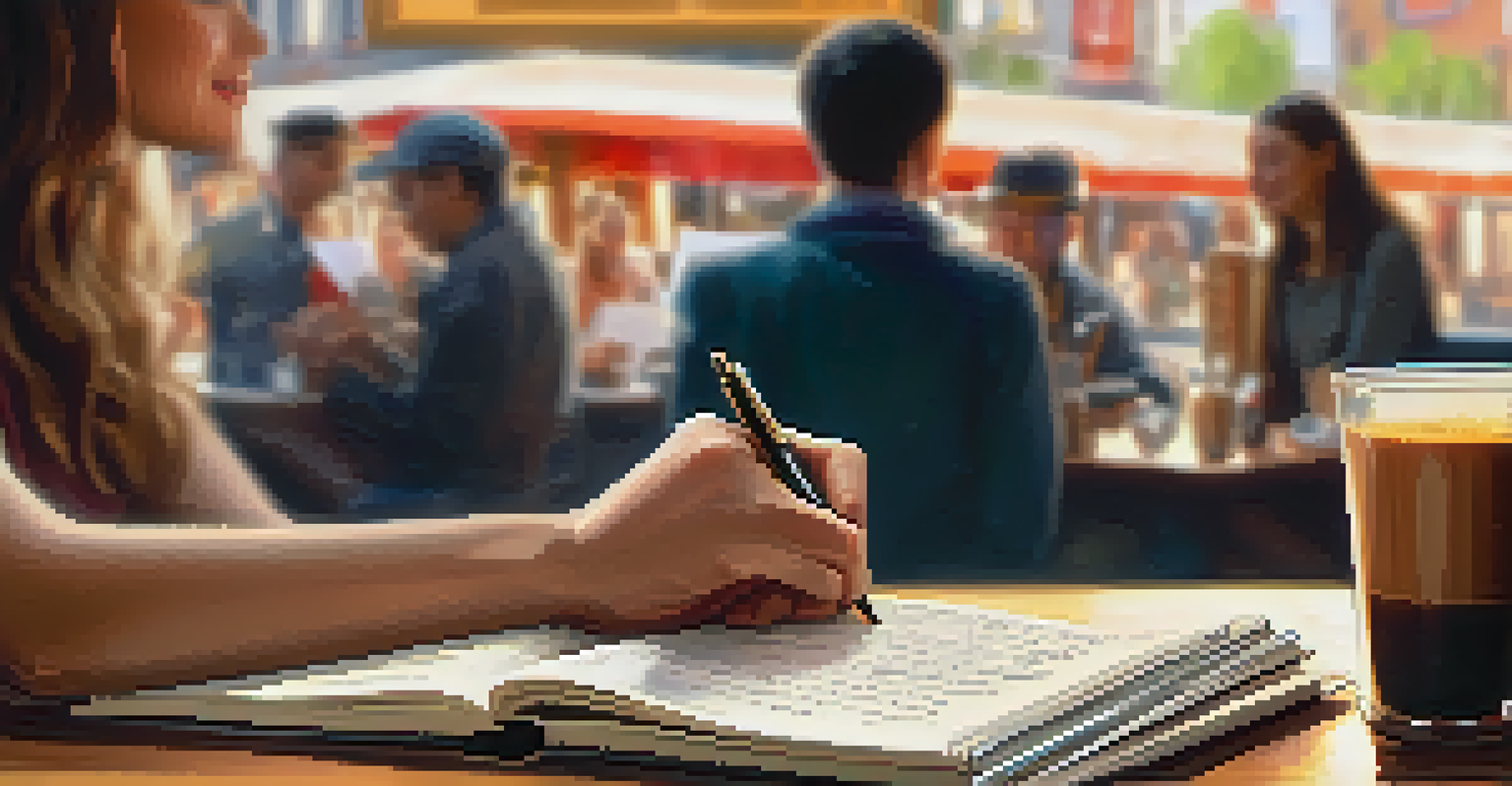The Art of Editing: Refining Your Writing for Clarity

Understanding the Importance of Editing in Writing
Editing is not just a final step; it's an integral part of the writing process. It allows you to refine your message and ensure your ideas are communicated effectively. Think of editing as polishing a diamond; it brings out the brilliance of your work.
The first draft is just you telling yourself the story.
Without editing, your writing may carry unnecessary clutter, making it difficult for readers to engage. A well-edited piece invites readers in, guiding them through your thoughts without confusion. This clarity is essential in maintaining their interest.
Moreover, editing helps you identify your unique voice as a writer. By revising and refining, you can highlight what makes your perspective special. This not only enhances clarity but also builds a stronger connection with your audience.
The Different Types of Editing Explained
Editing can be broken down into several types: developmental, copyediting, and proofreading. Developmental editing focuses on the overall structure and content, ensuring that your ideas flow logically. Think of it as the architecture of your writing.

Copyediting hones in on grammar, punctuation, and style, making your writing polished and professional. This stage is where you ensure that every word contributes to your message, much like a sculptor chiseling away excess stone to reveal the statue within.
Editing Enhances Writing Clarity
Editing is essential for refining your message and ensuring your ideas are communicated effectively.
Finally, proofreading is the last line of defense against typos and minor errors. It's akin to giving your manuscript a final once-over before sending it off into the world. Each type of editing plays a crucial role in achieving clarity in your writing.
Creating a Structured Editing Process
To edit effectively, it’s helpful to have a structured process. Start by setting your writing aside for a little while; this distance allows you to return with fresh eyes. Just like a chef tastes their dish after letting it rest, you’ll gain a new perspective on your work.
Editing is the essence of writing. It’s what separates the good from the great.
Next, tackle the big picture first. Look for issues with structure, coherence, and flow before diving into the nitty-gritty details. By addressing major concerns first, you’ll save time and energy when you get to the finer edits.
Consider creating a checklist that includes all the elements you want to focus on. This not only keeps you organized but also ensures that you don’t overlook any important aspect of your writing during the editing phase.
Tips for Cutting Out Unnecessary Words
One of the most common pitfalls in writing is verbosity. To achieve clarity, it’s essential to cut out unnecessary words. For instance, instead of saying 'due to the fact that,' simply use 'because' – it’s shorter and clearer.
Reading your work aloud can help you identify areas where you tend to ramble. If a sentence feels long and cumbersome, challenge yourself to convey the same idea in fewer words. This practice not only tightens your writing but also enhances its impact.
Types of Editing Explained
Understanding the different types of editing—developmental, copyediting, and proofreading—helps in achieving clarity in your writing.
Another tip is to eliminate filler phrases that don’t add value. Phrases like 'in my opinion' or 'it is important to note' can often be omitted without losing meaning. Your writing should be direct and purposeful, driving your points home with precision.
Enhancing Clarity Through Sentence Variety
Using a mix of short and long sentences can significantly impact the rhythm of your writing. Short sentences often create a sense of urgency, while longer ones can elaborate on complex ideas. This variety keeps readers engaged and enhances overall clarity.
When you vary sentence structure, you also break the monotony of your writing. Consider using questions, exclamations, or even fragments to convey emotion and maintain reader interest. This dynamic approach can help clarify your points while keeping your audience hooked.
Remember, clarity doesn’t mean simplicity; it means being effective in your communication. By playing with sentence length and structure, you can communicate intricate ideas without overwhelming your readers.
The Role of Feedback in the Editing Process
Seeking feedback from others can be invaluable in the editing process. A fresh set of eyes can catch errors or unclear passages that you might have overlooked. Just as an artist might seek critique to improve their work, writers benefit from external perspectives.
When asking for feedback, be specific about what you want to improve. Whether it’s clarity, flow, or character development, guiding your readers can lead to more constructive criticism. This approach not only helps refine your work but also fosters collaboration.
Feedback Strengthens Your Work
Seeking feedback from others provides valuable insights that can enhance clarity and improve your writing.
Finally, consider the feedback as one piece of the puzzle. While it can provide insight, it’s essential to maintain your voice and vision. Striking a balance between your instincts and external feedback will lead to a stronger, clearer piece.
The Final Touch: Proofreading for Perfection
Once you've completed your edits, the final stage is proofreading. This step focuses on catching any lingering typos, grammatical errors, or formatting inconsistencies. Think of proofreading as a safety net that catches mistakes before your work reaches its audience.
Reading your piece backward can be an effective technique during proofreading. This method forces you to focus on individual words and sentences, making it easier to spot errors. It’s a simple trick that can save you from embarrassing mistakes.

Don't hesitate to read your work out loud as well. Hearing your writing can reveal awkward phrasing or unclear sections that might go unnoticed when reading silently. This final touch ensures that your writing shines with clarity and professionalism.